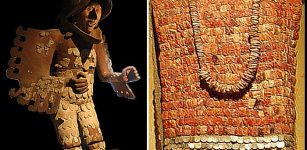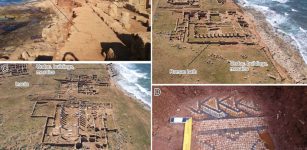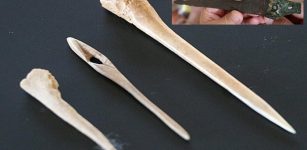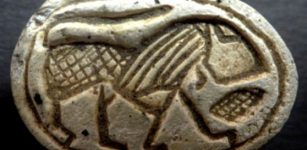Edøy Discovery: Traces Of 1,000-Year-Old Ship Burial Detected In Norway
Jan Bartek - AncientPages.com - A high-resolution georadar has detected traces of a ship burial and a settlement that probably dates to the Viking Period at Edøy in Møre and Romsdal County in Norway.
It is also possible that it dates to the Merovingian Period (5th-7th centuries) and the Merovingian Dynasty that ruled in the Early Middle Ages in western and central Europe.
 Settlement and the discovered ship. The landscape at Edøy. Map: Manuel Gabler, NIKU
Settlement and the discovered ship. The landscape at Edøy. Map: Manuel Gabler, NIKU
Edøy is located on the shipping lane to Trondheim, close to where early king Harald Fairhair is said to have fought two sea battles, winning royal power in Norway in the late 800s.
“This is incredibly exciting. And again, it’s the technology that helps us find yet another ship. As the technology is making leaps forward, we are learning more and more about our past, says Dr. Knut Paasche, Head of the Department of Digital Archaeology at NIKU, and an expert on Viking ships.
Paasche added that it is too early to say something certain about the date of the ship, but we know that it is more than 1,000 years old.
There are known only three well-preserved Viking ship burials in Norway, and these were excavated a long time ago.
The Edøy Ship. The ship traces were found by a Georadar. Photo: Manuel Gabler, NIKU
According to Tove-Lise Torve, head of the Møre and Romsdal county administration, the discovery did not happen by chance but is the result of hard work and using of large-scale high-resolution georadar measurements, developed by the LBI ArchPro research institute and its partners, including NIKU, using technology from Guideline Geo.
As with the find at Gjellestad in 2018, the remains of the ship are located just below the topsoil in an area where there was previously a burial mound.
 The Edøy Ship. The ship - as it is seen in the data. Illustration: Manuel Gabler, NIKU
The Edøy Ship. The ship - as it is seen in the data. Illustration: Manuel Gabler, NIKU
The burial mound appears as a marked circle some 18 meters in diameter in the georadar data. In the middle of the mound, archaeologists can see a 13-meter long keel and hints of the first two strakes on each side of the keel.
See also: More Archaeology News
The length of the keel indicates that the ship may have been a total of 16-17 meters long. It is too early to say anything certain about the age of the ship.
However, the ship must be from the Merovingian or Viking Period, which indicates that it is more than 1,000 years old.
In addition to the ship, the archaeologists also see traces of settlements in the data although it is still too early to date these.
Written by Jan Bartek - AncientPages.com Staff Writer





















